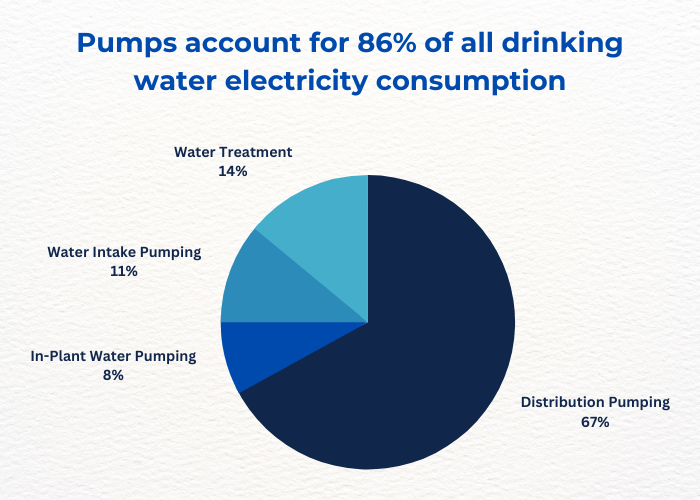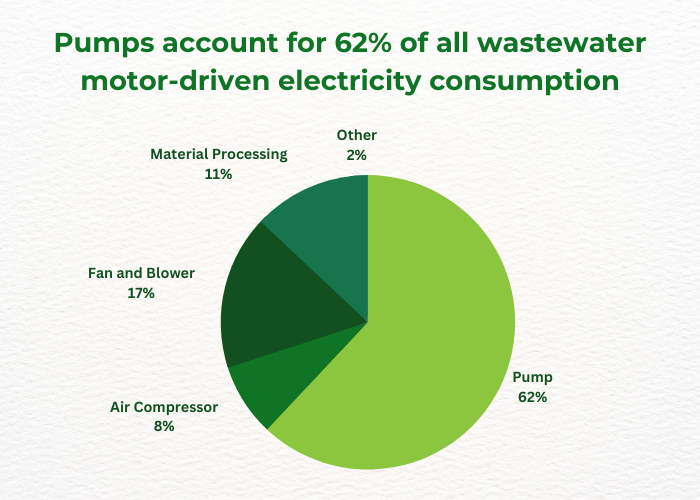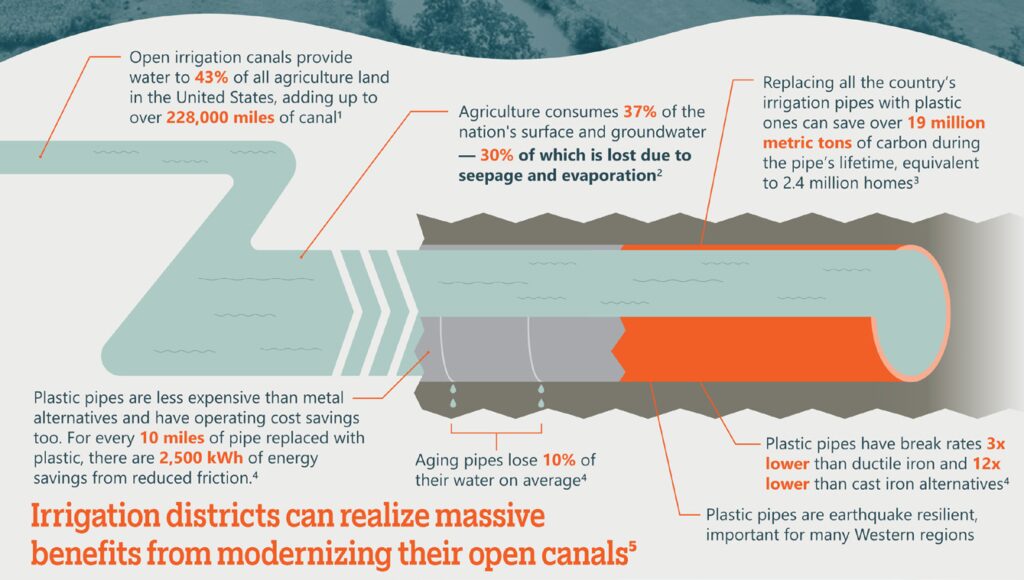The Hydraulic Institute: Optimizing the State of the Pump Industry
In this interview, Executive Director Michael Michaud tells us more about HI’s work with municipal and irrigation clients, its partnerships with government agencies, and its industry conferences.
Category: Blogs, Energy Efficiency, Regulatory, Water/Wastewater December 7, 2023
By Michael Michaud, Executive Director, Hydraulic Institute
The Hydraulic Institute (HI) is a member-based industry group that brings together the manufacturers of pumps, motors, drives, and other pumping equipment to create standards and improve the state of the industry. In this interview, Executive Director Michael Michaud tells us more about HI’s work with municipal and irrigation clients, its partnerships with government agencies, and its industry conferences.
Irrigation Leader: Please tell us about HI.
Michael Michaud: HI was founded in 1917 by a group of pump manufacturers interested in standardizing how pumps were commercialized. The first standard that HI developed was the pump test standard, which provides a basis to compare different pumps’ performance with the aim of meeting the specified performance criteria. Today, HI has over 120 members, including pump manufacturers but also suppliers of critical components for pumping systems, such as motors, drives, seals, bearings, and so on. HI maintains 36 standards and has developed guidebooks for various applications, including water and wastewater treatment plants. Over the years, HI’s activities have expanded into the certification of people, products, and processes as well as training. In 2010, Pump Systems Matter (PSM) was established as a subsidiary educational organization dedicated to training people on pumps and pumping systems.
Irrigation Leader: Do you have any current partnerships with municipal utilities or city governments?
Michael Michaud: HI has developed a Training Partner Program that is specifically designed for municipal utilities, many of which have challenges providing training to their workforce. With needs that span from general pump knowledge to maintenance requirements to system design and efficient operations, it can be a challenge for many municipalities to maintain a knowledge base in their workforce. Training partners have unique access to PSM’s portfolio of training courses, which can be shared company-wide, as well as discounts on more advanced content for job-specific training. Larger municipalities with in-house engineering often include a subscription for HI standards and guidebooks in their partnership as well.


A study by Cadeo reveals that pumping uses most of the energy involved in water and wastewater systems.
Irrigation Leader: HI spends a lot of time highlighting pump efficiency. Would you tell us more about that?
Michael Michaud: A recent study by Cadeo, an energy efficiency consultancy familiar with pumping systems, determined that public water and wastewater utilities account for 2 percent of the nation’s electrical use and that pumping systems account for around 86 percent of the electrical use on the drinking water side of the equation and 62 percent on the wastewater side. We know that most pumping systems are oversized from the outset and that system requirements evolve over time. If municipalities were to start conducting regular energy assessments and then implementing pump system optimization programs, they would be able to significantly reduce the energy consumption and carbon production of their plants.
Irrigation Leader: Are there government programs that support this?
Michael Michaud: The U.S. Department of Energy (DOE) started moving down the pump efficiency path when it began regulating certain commercial and industrial pumps in 2020. This effectively removed the least-energy-efficient pumps from the market—about 25 percent of the total. It is a good start, but real change won’t be achieved unless we start replacing the installed base with more efficient pumps. The state revolving fund programs have a green set-aside of 10 percent of their funds that must be spent on carbon-reduction initiatives. Municipalities might struggle to implement green projects such as major watershed improvements due to permitting requirements and complexity, but simple upgrades to their existing pumping systems also qualify and can be straightforward. Most facilities have already identified the bad actors—equipment that often breaks down or requires maintenance. Starting with these usually provides the biggest payback and is also helpful when rolling out additional improvement programs across the plant.
Irrigation Leader: Which HI programs support the DOE initiative?
Michael Michaud: From an assessment standpoint, HI’s Pump System Assessment and Optimization courses teach operators how to look at their systems from an energy efficiency perspective and identify bad actors. HI’s Pump Test Lab Approval Program and the HI Energy Rating Label help users calculate the real savings provided by actual pumps and determine the payback period. This is helpful information when selecting a replacement unit. In many areas, the pumps listed in the HI Energy Rating Database also qualify for rebates from public utilities, which can significantly decrease the payback period.
Irrigation Leader: Please tell us about your technologies to save energy and water, including pump electrification, efficiency upgrades, and pipe conversion.

A Cadeo study demonstrates that installing pipes is a great first step irrigation districts can take toward water conservation.
Michael Michaud: They are less technologies than ways of thinking—namely, systems thinking, or looking at how every part of the system interacts with the others. A Cadeo study that looked at irrigation efficiency is a great example. There are over 600,000 pumps driving our nation’s irrigation systems—a large number of independent minisystems, each with its own specific needs and challenges, and each of which could benefit from a systems approach. Most farmers don’t have time to think about this, because they have very specific needs and time constraints. When the pump breaks, the most important thing is to get a replacement as quickly as possible. But something as simple as covering open canals or installing pipes is a great first step toward water conservation. There have been a lot of advances in the sizes of solar-driven pumps, which might be able to replace diesel systems. Then, there are variable-speed drives. All of these will have a positive effect on energy efficiency and carbon reduction.
Irrigation Leader: How does the Farm Bill relate to optimizing pumps?
Michael Michaud: H.R. 5723, the Leveraging Efficiency Awareness for Pumping Systems (LEAPS) Act, was introduced in the U.S. House of Representatives on September 26, 2023. Its main purpose is to inform farmers about the cost savings, energy savings, and carbon reduction that can be achieved by energy-efficient pumping systems. The U.S. Department of Agriculture (USDA) will share information on its website, including an energy savings calculator into which farmers can enter basic information on their systems and calculate whether a more-energy-efficient solution might make sense for them.
Additionally, the USDA provides training for individuals conducting energy audits of farms for participation in USDA energy programs so that they truly understand the benefits of energy-efficient pumping systems. This is a great opportunity for HI to provide help with the efficiency calculator. We already have several similar calculators on pumps.org as well as training and informational materials on pump system optimization that are being adapted for the USDA. Finally, the LEAPS Act would qualify efficient pump upgrades for funding through programs like the Environmental Quality Incentives Program. We are optimistic that the LEAPs Act will find its way into a bipartisan Farm Bill for passage this year.
Irrigation Leader: Please tell us about any programs specifically oriented toward municipalities and municipal employees.
Michael Michaud: The training programs are the most important touchpoint for municipal employees, but some want to interact directly with engineers on committees and get involved in writing standards and developing training materials. When end-users, engineering firms, and manufacturers are all sitting around the same table, working to solve problems together, it usually produces value for everyone.
Irrigation Leader: Tell us about HI’s conferences.
Michael Michaud: HI has several conferences per year, providing opportunities for the pumping community to get together to work on standards and guidebooks, share information, celebrate achievements, and so on. Most of the major markets have trade shows where the various manufacturers and suppliers show up to showcase new products. That doesn’t really happen at HI events. We focus more on identifying the issues that the industry is facing and working together to solve them. We have sessions to inform the industry about upcoming trends and important regulations and lots of committees where dedicated volunteers and industry experts come together to analyze problems and develop solutions. These often take the form of standards, guidebooks, and training, but it is the close collaboration of so many different expert perspectives that turns them into valuable tools for the industry and makes HI meetings special.
Irrigation Leader: What is your vision for the future?
Michael Michaud: The vision of PSM is getting pumping systems to operate at their best efficiency point (BEP). Perhaps it is more of a journey than an actual destination, as every system will have different needs, and these needs will change over time. If HI and PSM can help raise awareness of the BEP and what it means to a pumping system, its reliability, and its energy efficiency, then we are well on our way.
_________________________________________________________
Originally published in Irrigation Leader Magazine, November/December 2023.
SUBSCRIBE TODAY
Get the latest pump industry news, insights, and analysis delivered to your inbox.
